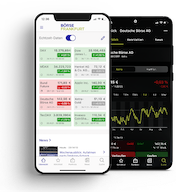Bonds: US inflation target out of reach
The decline in inflation and interest rate cuts does not seem to be happening that quickly after all - at least in the USA. In the corporate bond segment, well-known names and US dollar bonds continue to attract investors.
14 February 2025 FRANKFURT (Frankfurt Stock Exchange). The fact that inflation in the USA is more persistent than expected has come as a surprise. In January, consumer prices rose by 3 percent year-on-year, as was announced on Wednesday. This is the highest level for six months. Core inflation - i.e. excluding food and energy prices - was also higher than expected at 3.3 percent. “The inflation target of 2 percent remains out of reach,” commented analyst Ulrich Wortberg from Helaba. “The US Federal Reserve should therefore be encouraged to pursue a cautious and restrained strategy with regard to interest rate cuts.”
Federal Reserve Chairman Jerome Powell had already made it clear to the US Senate on Tuesday that there is no rush to adjust monetary policy. The economy and labor market are in good shape and inflation and wage dynamics are still high. “We feel confirmed in our outsider opinion that the US Federal Reserve will not cut its key interest rates until the end of this year,” comments Berndt Fernow from LBBW. “One is inclined to add: If at all."”
US and European interest rates diverge
The money futures markets are now also only pricing in a single interest rate cut for the US Federal Reserve this year. For the ECB, on the other hand, several interest rate cuts and - as reported by Deutsche Bank - a cumulative 81 basis points are expected. Nevertheless, long-term yields have also risen here in a weekly comparison: Ten-year Bunds are yielding 2.42 percent on Friday morning, up from 2.36 percent a week ago.
Second and third-tier government bonds popular
As far as government bonds are concerned, there is also a lot in demand beyond the first tier: according to Gregor Daniel from Walter Ludwig Wertpapierhandelsbank, government bonds from Romania (XS2770920937), Poland (XS2975280509) and Spain (ES00000128Q6), all maturing in 2030 or 2031, are in demand. These are currently yielding 5.2 percent, 2.7 percent and 2.9 percent respectively.
Telekom, Knorr and Deutsche Bahn in demand
In corporate bond trading, Daniel reports demand for Deutsche Telekom bonds maturing in 2032 (XS2987630873) with a yield of just under 3 percent. Agon Alihajdari from Steubing AG mentions bonds from Knorr-Bremse maturing in June of this year (XS1837288494) as well as Bayer (XS2630111719) and Deutsche Bahn, both maturing in 2033 (XS2624017070). They currently yield 2.1 percent, 3.4 percent and 2.8 percent respectively.
Südzucker hybrid bonds (XS0222524372) recovered somewhat after Europe's largest sugar company raised its forecast. “After a lot of bad news in 2024, this is finally good news again,” notes Brunner. He also sees both buying and selling for the Nordic bond from Mutares (NO0012530965).
US dollar bonds are also going down well, according to Daniel, for example Alphabet bonds maturing in 2030 (US02079KAD90) and currently yielding 4.6 percent.
New issue Italy, EU increases
The brisk issuing activity continues. As Brunner reports, Italy launched new government bonds on the market with a term until 2040 and a coupon of 3.85% (IT0005635583). There were also two increases in EU bonds by a total of 11 billion euros. One runs until 2031 and offers 2.5 percent (EU000A3L1DJ0), the other until 2050 and 3.2 percent (EU000A3K4EU0).
According to Brunner, the Nordic Bond issued by GoCollective in April 2024, which matures in 2027 (NO0013185835), was also increased.
By Anna-Maria Borse, 14 February 2025, © Deutsche Börse
About the Author
Anna-Maria Borse is a financial and business editor specializing in the financial market/stock exchange and economic topics.
Feedback and questions to redaktion@deutsche-boerse.com





